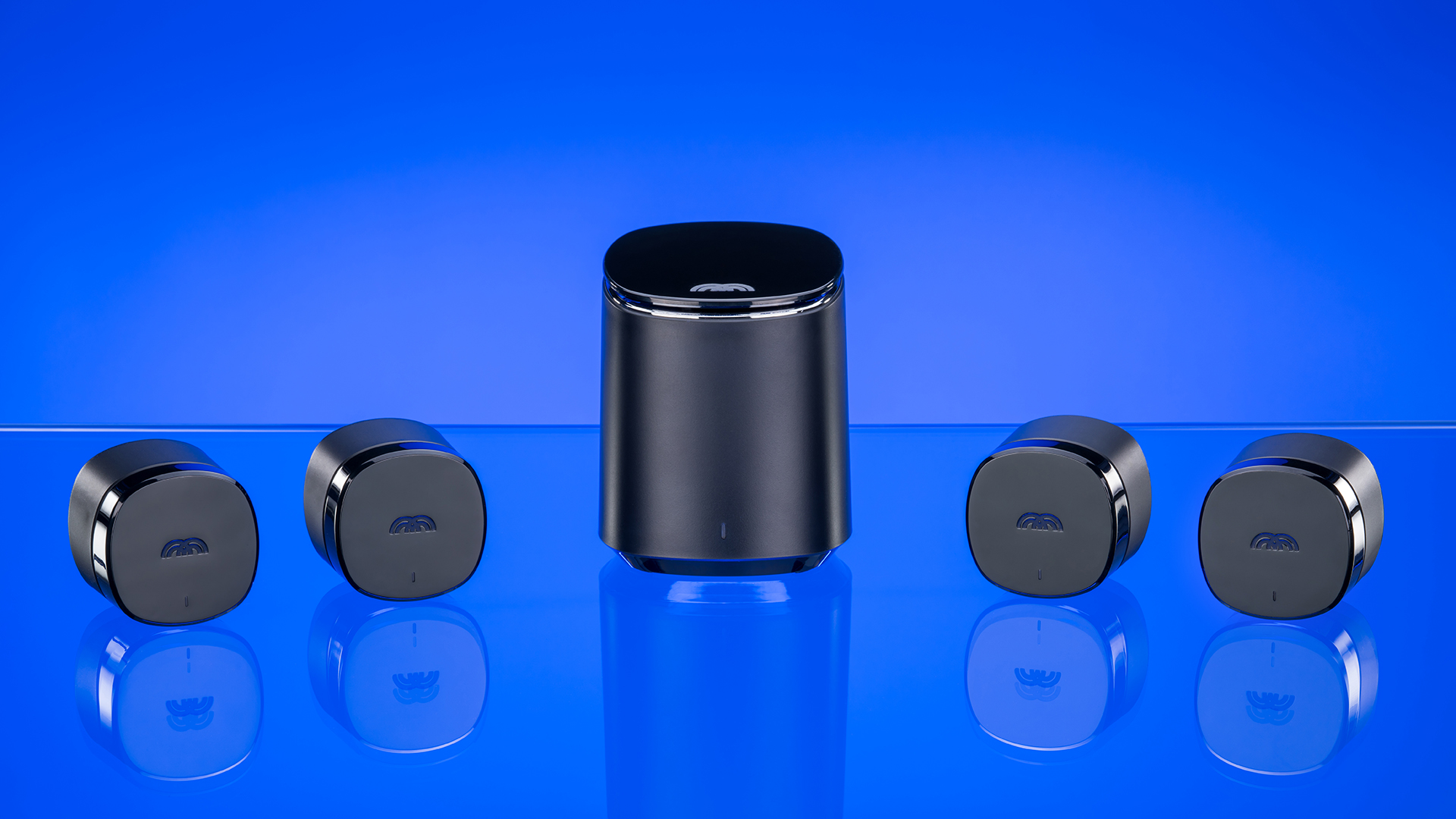
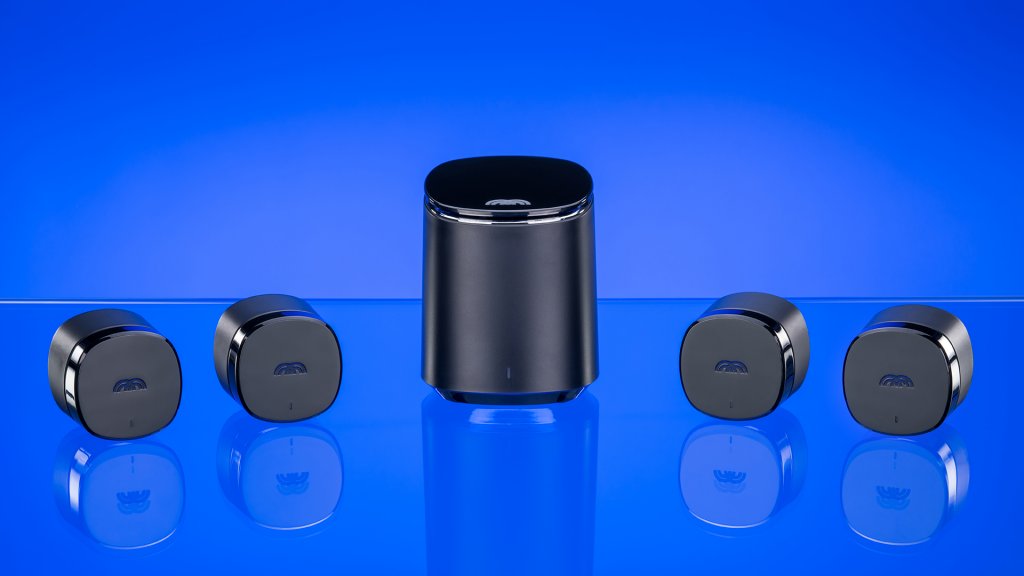
I don’t think it’s much of a reach to say that if you’re reading this, you’ve had to deal with the pain of a lousy Wi-Fi connection at some point. Sometimes, a room in your house can seem like a networking black hole, picking up little to no signal even if you’re using a high-end router. Thankfully, such issues are quickly becoming problems of the past, as mesh Wi-Fi technology makes seamless whole home wireless connectivity easier than ever. New options for mesh Wi-Fi systems are releasing all the time, like the intriguing offering from tech startup Mercku, who — after a successful Indiegogo campaign that saw them pull in over 450% of their funding goal — put out their M2 Hive Mesh Wi-Fi System. Mercku purports that their Hive system delivers performance that outclasses many other comparable mesh systems, and I was lucky enough to receive a sample so I could see just how well it mixes blazing-fast speeds and dead-spot-destroying coverage.
An Introduction to Mesh Wi-Fi
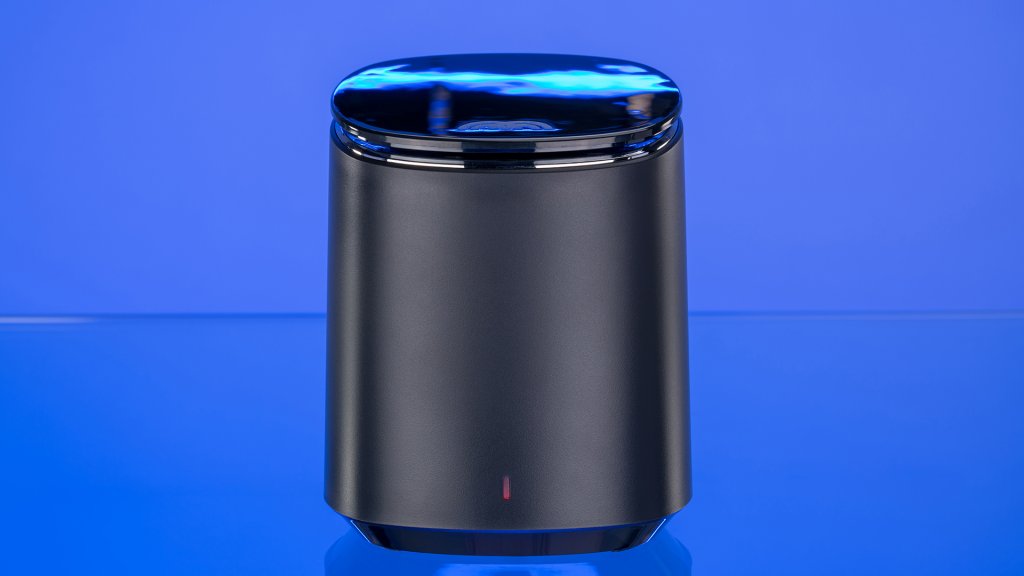
Wi-Fi was meant to eliminate the inconvenience of running cables throughout a home, but for many people, the advent of consumer Wi-Fi meant the dawn of new headaches. As it turned out, large houses and materials like concrete and brick were the bane of wireless networking, stifling signals to the point that establishing a reliable Wi-Fi connection was all but an impossibility in certain corners and rooms of many homes. While there have always been ways to circumvent this issue of Wi-Fi dead spots, all of them involved sacrificing some of the convenience that made wireless networking so appealing in the first place. Then mesh Wi-Fi came to save the day.
Mesh networking, while not a new technology per se (it’s seen years of use in commercial and military applications), is the latest revolution in consumer home networking. In the past, Wi-Fi users were forced to combat their wireless woes with band-aid solutions like range extenders or extra access points, which, while good at expanding coverage, were hampered by their own drawbacks. Range extenders create their own secondary network and generally cut bandwidth in half. Solutions like extra access points can alleviate these issues, but also introduce the problem of having to run an Ethernet cable from the main router to the secondary access point — which kind of defeats the ease and convenience of Wi-Fi.
Mesh Wi-Fi takes the best aspects of range extenders and access points while ditching the weaknesses of those technologies. Like range extenders, mesh Wi-Fi nodes don’t need any sort of Ethernet connection to expand coverage, but unlike an extender, a mesh node doesn’t create a separate network or severely hamper speeds, meaning you get seamless switching between access points without having to worry about negative performance implications. Mesh networks are also easier to update and maintain, since they aren’t cobbled together with multiple pieces of equipment from different manufacturers, unlike networks with range extenders and access points that must be maintained separately.
Mesh networks are generally composed of a main router (also commonly referred to as a base station) and any number of nodes — wireless transmitters that communicate with one another to spread a wireless signal farther out from its source, blanketing the area in Wi-Fi. As you move from room to room, your devices automatically switch to whichever node broadcasts the strongest signal in that area. As the Wi-Fi signal travels to a node, or travels from node to node, speeds are reduced, though the overall reduction is less than those encountered with many range extenders, and it’s certainly better than connecting to a weak router signal.
Perhaps the best aspect of mesh systems, apart from the improved range, is their ease of use. Systems like the M2 Hive are ideal networking solutions for the average consumer: people who don’t want to piece together a Wi-Fi system from multiple disparate pieces of hardware spend hours fussing through arcane software interfaces and settings just to get everything up and running, not to mention having to diagnose each separate piece of the system if they continue to experience any connection issues. With the Hive, everything is consolidated: all the hardware you need is included in the package, and it can be set up and managed through a single intuitive app.
Exploring the Colony: M2 Hive Hardware Breakdown
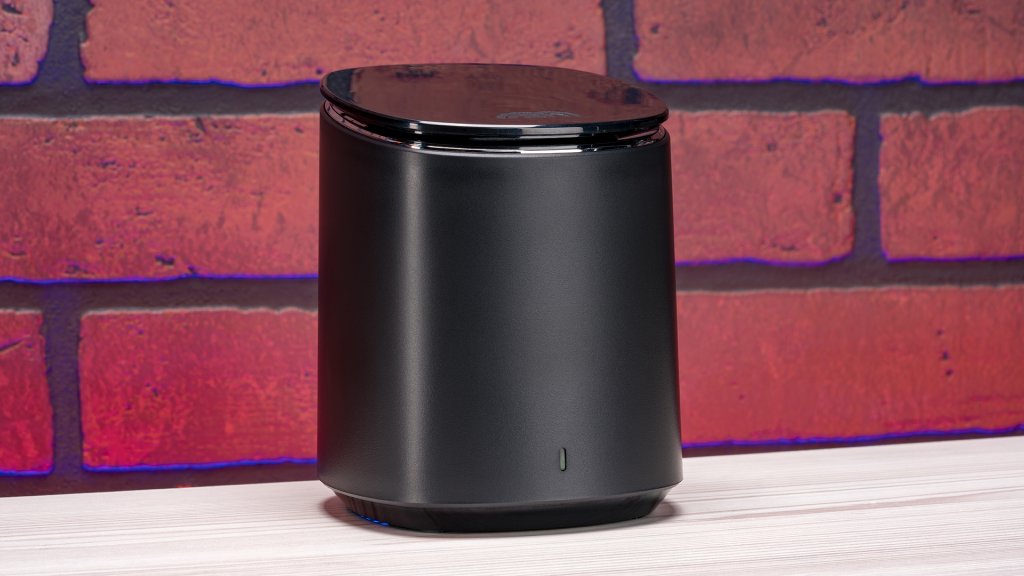
Now that we’ve looked at the basics of mesh networking, it’s time to explore the M2 Hive itself. The Hive is composed of the M2 Standalone (also referred to as the “Queen” in some Mercku materials) Router and four M2 Bee Nodes. The M2 Standalone is small and simple, not much bigger than its complementary nodes. On its own, the dual-band AC1200 M2 Standalone Router is capable of covering up to 3,000 square feet. Add on the four included nodes, and the M2 Hive System can reach upwards of 5,000 square feet of Wi-Fi coverage.
The M2 Standalone’s small size comes at a bit of cost — it only includes two auto-sensing Gigabit Ethernet ports. Since one of those ports will be used as WAN connection for connecting to a modem, that leaves only a single spare LAN port to work with. That means if you’re looking to run multiple wired connections, you’ll need to invest in a solution like an Ethernet switch.
With so many mesh systems on the market now, the Hive may look like just another face in the crowd, but there’s a lot going on beneath its sleek surface. You see, Mercku included a bit of a secret sauce within the M2, a technology they dub the “WHEMS antenna.” According to Mercku, this antenna enables the Hive to achieve speeds far higher than the average mesh Wi-Fi system. While M2 system specs don’t illustrate a performance differential from major competing systems like the Netgear Orbi or Google Wifi, Mercku claims that their antenna and transceiver design is more efficient than that of their competitors, resulting in enhanced system noise reduction. This superior noise reduction, in turn, helps the M2 reach speeds closer to that of its theoretical limit (867 Mbps on the 5 GHz band) than its competitors are able to achieve.
While I unfortunately do not have access to other major mesh systems to test Mercku’s claims of reduced noise and interference, there are two points to keep in mind about the Hive: at $300, it’s one of the more reasonably priced mesh options with AC1200 speeds and 5,000 square feet of coverage; and, as I’ll explain later, the Hive delivered impressive enough performance to make me believe that Mercku’s talk isn’t just posturing.
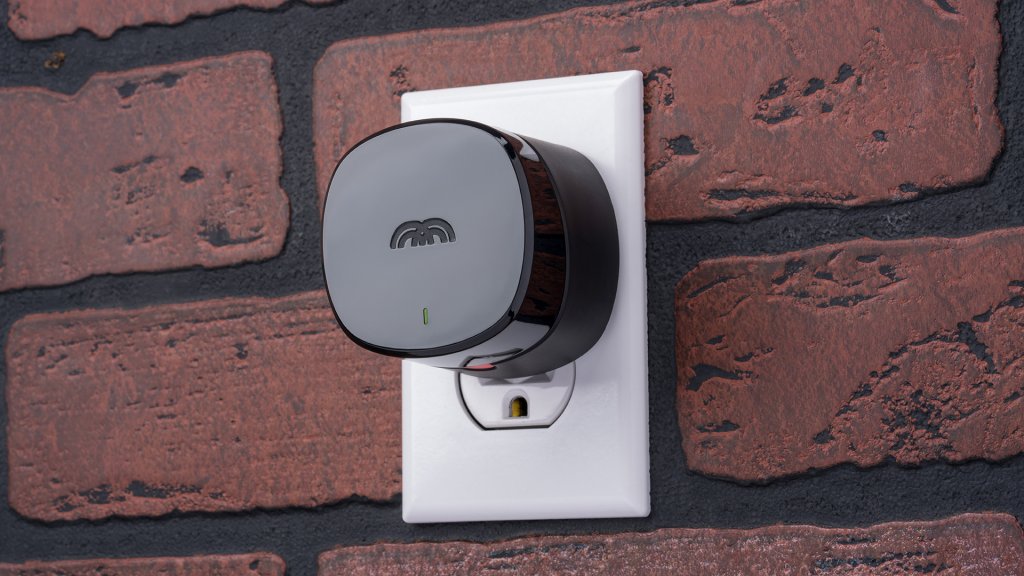
The M2 Bee Nodes are small and minimalist, resting on an outlet without drawing attention to themselves. The Hive system includes four Bees, but they’re also available individually if you want to add more. You can add on as many as you want, but Mercku recommends six to eight for maximum efficiency.
Each component of the Hive, router and node alike, sports a color-changing LED to indicate connection status — red for disconnected and green for connected. That’s especially useful when you’re setting up the nodes since you can tell within seconds if a Bee was able to establish a successful connection with the Queen. Beyond that, the nodes and router are essentially blank slates, which is an intentional aesthetic choice; mesh systems like the M2 are generally designed to blend in with your home’s decor and not draw attention. In that respect, the M2’s components all pass the test. In fact, that’s a bit of an understatement: Mercku won a Red Dot Design Award for the Hive, attributed to the system being “discreetly and elegantly designed” and for blending in well with its surroundings.
Buy the Mercku M2 Hive Mesh Wi-Fi System: $300.00
Wi-Fi Settings Made Simple with the Mercku App
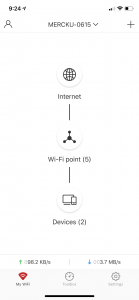 If you don’t have experience with mesh Wi-Fi, the thought of setting up a network of multiple interlocking devices may sound intimidating. But just as mesh networking removes the pain of whole home Wi-Fi connectivity, Mercku takes the hassle out of setting up and maintaining a wireless network. Managing an M2 Hive system is easy thanks to the Mercku app, available on iOS and Android.
If you don’t have experience with mesh Wi-Fi, the thought of setting up a network of multiple interlocking devices may sound intimidating. But just as mesh networking removes the pain of whole home Wi-Fi connectivity, Mercku takes the hassle out of setting up and maintaining a wireless network. Managing an M2 Hive system is easy thanks to the Mercku app, available on iOS and Android.
Mercku’s app is simple and easy to navigate, providing a dashboard for monitoring network status and plenty of options you’d expect from a wireless router, like port forwarding, DHCP and DNS settings, parental controls, and a configurable blacklist for clients and sites. Mercku also includes a speed test inside the app, so you can see if your Hive system is hitting your desired performance. Based on my testing, the measurements from the speed test seemed accurate, as they were right in line with results delivered by Spectrum’s and Google’s speed testing software.
A Taste of Honey: Testing the M2 Hive
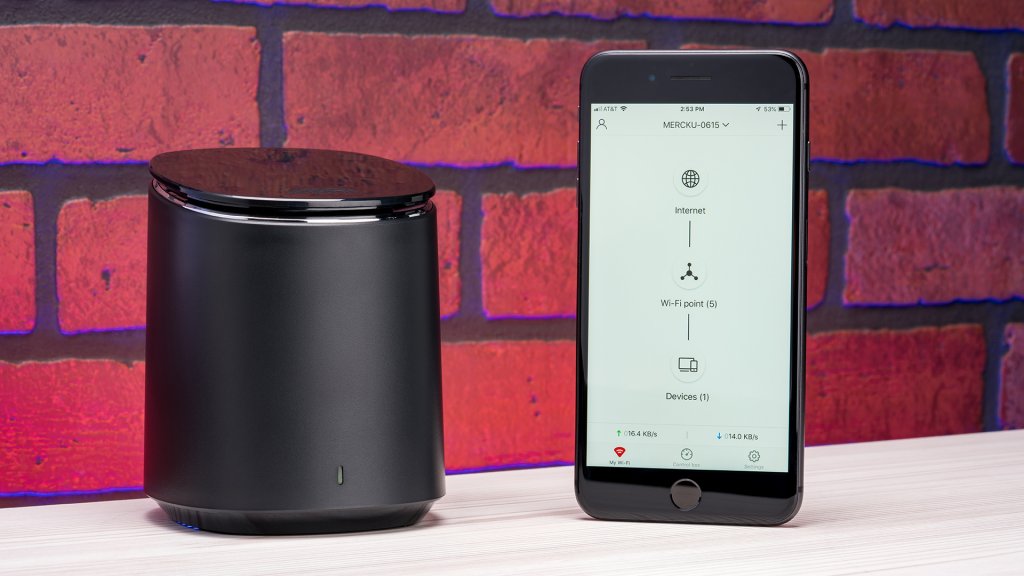
When I received the M2 Hive sample from Mercku, I was kind of at a loss for how I could best test the system’s capabilities. I live in a small studio apartment, so while I would be able to glean a good idea of how the main router functioned, my living space is far from the ideal testbed for a mesh Wi-Fi system. I doddered about until I finally convinced a friend who rents a large house with five other housemates to let me test out the Hive one afternoon at his home.
After hooking the M2 Router up to my friend’s modem, I downloaded and launched the Mercku app on my iPhone and got to work on setting up the router, thanks to the app’s accessibility, that was an easy matter. The app gently guides you step-by-step through the setup process, which includes creating an SSID and password for each band; rudimentary stuff, but executed well nonetheless. The next step would be setting up the nodes around the house, a process I expected to be time-consuming, but would turn out to be anything but.
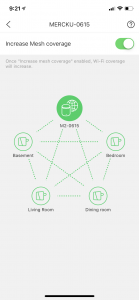 Adding a node was far easier than I expected: setting up the Bee Nodes consists of plugging it into the wall and…actually, that’s it. No sync buttons to worry about, no needing to open up the app. Just plug it in, wait for the LED to turn green and you’re good to go. I was absolutely bowled over by this; never before in my experience had a piece of networking equipment been so easy to set up.
Adding a node was far easier than I expected: setting up the Bee Nodes consists of plugging it into the wall and…actually, that’s it. No sync buttons to worry about, no needing to open up the app. Just plug it in, wait for the LED to turn green and you’re good to go. I was absolutely bowled over by this; never before in my experience had a piece of networking equipment been so easy to set up.
Once you’ve set up a node, you can use the Mercku app to set a location name for easier network management. Once you’ve set up and named your nodes, you can navigate from the main menu of the Mercku app to a system-level overview of each of the Hive’s components, complete with each piece’s name and connection status.
Setting up the whole system at my friend’s house only took between ten to fifteen minutes, and a lot of that time can be attributed to walking around looking for the best places to plug in the nodes. After setting everything up, we got to work on testing the limits of the Hive.
Mercku designed the M2 Hive to meet the demands of the modern Smart Home, which can sometimes have more than twenty devices connected at once and across all corners of the house. Knowing this, I was intent on throwing the toughest use cases I could think of at the M2 system. That meant streaming 4k 60 fps video, downloading games, using my friend’s Sonos system to stream music in multiple rooms…basically, anything I could do to tax the system, I did. And the M2 Hive handled it all like a champ.
I fully expected the Hive to buckle under the pressure of everything I was throwing at it, but every device at every corner of the house kept chugging away without any visible issues. All told, I had about twelve devices connected to Hive and actively working at once. Based on how well the system performed with this many devices working on bandwidth-hungry tasks at once, the M2 Hive should be capable of handling the average family’s Wi-Fi needs. Considering that many users won’t be intentionally trying to make their Wi-Fi implode like I did for the sake of testing, I’m comfortable in extrapolating that the Hive should be up to the task of handling all the tech and Smart Home devices a family wants for a modern connected lifestyle.
The M2 Hive Puts the Sting on Dead Spots
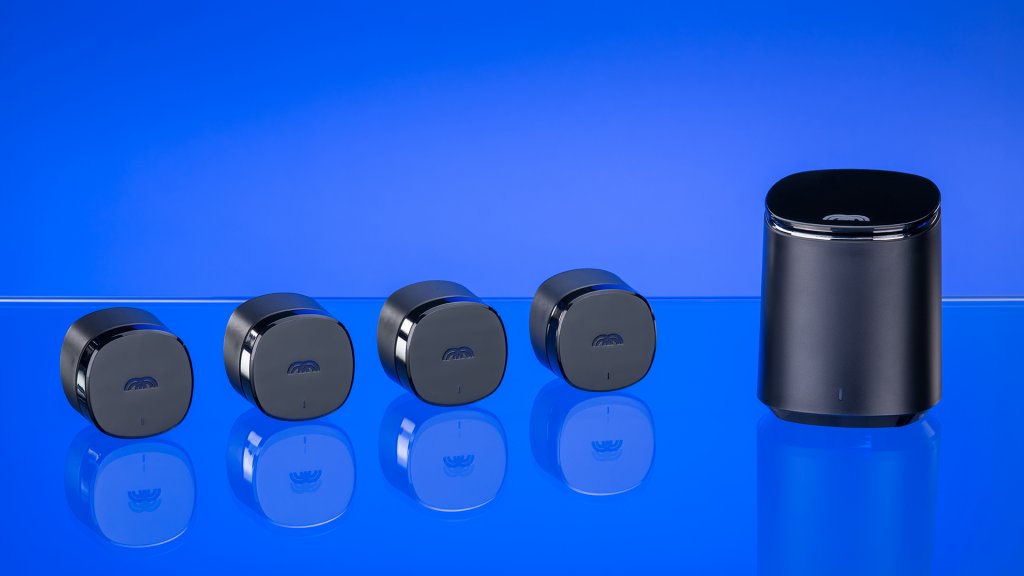
It’s clear at this point that mesh technology is the future of home networking, though to speak candidly, if you’re living in a small apartment like me, you probably don’t need a mesh Wi-Fi solution (though the M2 Standalone Router is an easy recommendation for a well-performing router at a great price). For anyone else, especially people with large homes or homes constructed with signal-killing materials like brick or plaster, then the M2 Hive is an excellent remedy for your connectivity woes. If you’re looking to invest in a new router that can handle all the devices a family would want to connect, and if you need to bring Wi-Fi to all corners of your home, then I see no reason for anyone with typical networking needs to choose anything other than a mesh system, and based on my experience, the M2 Hive is a great option.
Featured in this article:
Mercku M2 Hive Mesh Wi-Fi System: $300.00
Note, all prices and products are accurate at the time of article publication, although some may have changed or are no longer available.
